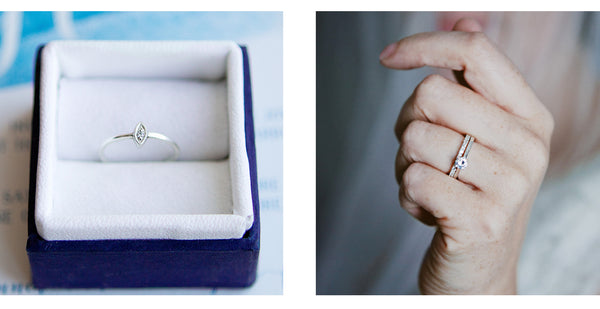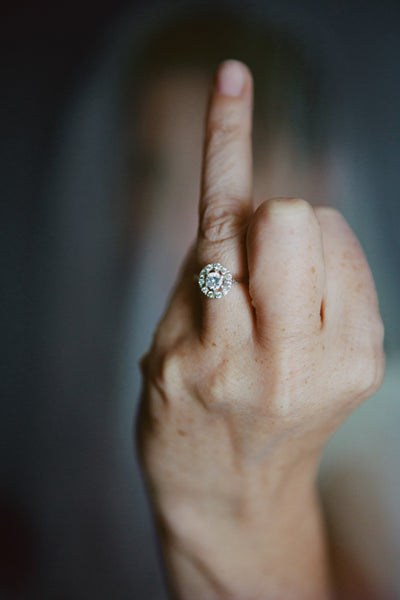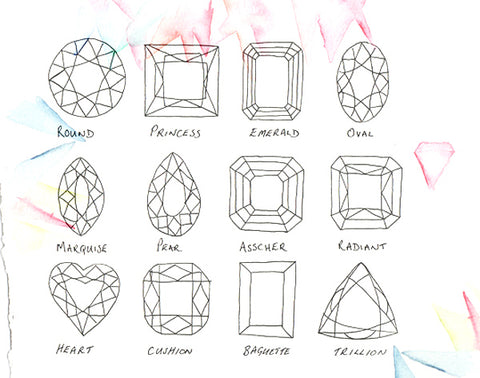Your Cart is Empty
SHOP
Marriage proposal - Part 2- Choosing the ring
November 14, 2017 4 min read

Now lets talk about the ring. It doesn’t have tobe the one you intend to be ”THE” engagement ring, but really you do need to have a ring. It could be a borrowed ring or a simpler proposal ring. You should have a reasonably good idea oftheir style and the type of ringthey might like. Ask their best friend for advice but make sure they can keep a secret!

If you know your partner will want to be involved in choosing or designing their own ring, make appointments in advance so that you can tell them you’ve spoken to a designer who would love to design the perfect engagement ring for them. This is not only incredibly romantic but also shows how much you appreciate their style and opinion whilst also taking the pressure off you to select the right ring first time. An engagement ring is designed to be worn everyday for the rest of their lives, so it’s always best to get it right and consider that value when deciding on your budget.
When it comes to finger size don’t worry too much about that. Of course it’s nice to get it right first time but a good jeweller will always be able to resize for you. A good average size for awoman's engagement ring tends to be a size K or L so start there if you’re stuck. If you can take a ring they already wear to a jeweller and tell them which finger they wear it on, they should be able to to give a good guess to the size - it will only be a guess though so don’t worry if it’s slightly out. A photo of the person who’s going to be wearing the ring is also great to take along with you to show a designer as it can really help when looking at a style that they might like.
Whether you buy from a bricks and mortar jewellery shop or an independent jewellery studio all good jewellers will be happy to sit down with you to discuss a custom ring design.

There a few nuggets of knowledge to arm yourself with before embarking on purchasing a diamond ring. If you’ve not already heard, there are the 4C's - Carat, Colour, Clarity and Cut.
Carat (ct) - is essentially the weight of the stone;the larger the stone the larger the carat. A 0.5ct diamond is approximately 5mm in diameter for a round brilliant cut diamond. A diamond of 1ct is approximately 6.5mm in diameter for a round brilliant cut diamond. Small differences in the carat weight can be the equivalent of thousands of pounds difference to your budget. Remember size isn’t everything! Using smaller diamonds around a central stone will accentuate it, such as in a halo ring, and can make it seem larger than it is.
Clarity - as expected refers to the inclusions in the stone. All natural diamonds will have inclusions. Flawless diamonds are incredibly rareand it’s unlikely that you’ll ever come across one.What you ideally want though are stones where the inclusions are ones that are not visible to the naked eye andonly visible at 10x magnification; these diamonds make up the majority of stones on the market. There are different grades of stones from FL - flawless (forget those!), IF - internally flawless, VVS - very very slight inclusions, VS - very slight inclusions, SI - slight inclusions and I - included. Within these grades there are also different categories for example VS2 and SI1. The less inclusions in the stone the higher its value.
Colour - all diamonds are also graded by colour. Subtle difference in colour which may not be apparent to the naked eye will constitute a different colour grading. Colourless stones are gradedfrom D-F (warranting a higher value), near colourless areG-J,then going all the way through to Z. Once the stone is set and worn on the hand it’s unlikely you’ll notice the colour difference between D-G.
The cut -the cut of a diamond represents the range of proportions the stone has been cut to andits subsequent appearance. It affects how a stone sparkles and responds in different lighting.
There’s one more factor which is increasingly important and it’s the source of the stone. For us at Audrey Claude this is something that we’re really championing in the work we do through the use of traceable diamonds and gemstones. There was a time when tracing the mine a diamond came from, and knowing the conditions of the workers and environment, was just about impossible. That’s changing, both Canadian and Australian diamonds can be traced to the exact mine so we know that the stones have reached us under fair and ethical conditions. No child labour, no conflict zones, fairer wages, and respect for the environment.
When choosing a ring there’s also the diamond shape to consider. From round brilliant cut stones to emerald and oval cuts. Of course you can also choose a cluster design which uses a mix of different shaped stones to create a truly unique design.

You might not want to go the diamond route at all - there’s a whole plethora of stones and colours you could choose from striking blue Sri Lankansapphires, to deep red rubies, green tourmalines and everything in between. That’s probably why more and more couples are finding their engagement ring together, or better still, getting a custom engagement ring designed just for them.
This is just step one, next you have the wedding to plan but luckily we don’t do that!
We'd love to share with you our latest designs, exclusive offers and promotions. If you'd like to receive these sign up to the Audrey Claude Jewellery newsletter.
Get In Touch




